Your cart is currently empty!
-
Embarking on the Journey: Microdosing, Flow States, and the Pursuit of Optimal Performance

Dear readers, do you remember the last time you found yourself fully absorbed in a task, where time seemed to dissolve and the world around you faded into the background? This state of deep immersion, where you and your work become one, is known as a “flow state”, a term that’s gaining popularity in our increasingly performance-focused society. On the other hand, have you heard about “microdosing”? It’s the practice of taking minute doses of psychedelic substances, a strategy employed by many seeking to enhance their creativity, productivity, and mental well-being. But could there be a connection between these two seemingly distinct concepts? This is the intriguing question we’ll explore today in this journey through the meandering corridors of consciousness and cognition.
Small Doses, Big Impact: Understanding Microdosing
To dive into this fascinating topic, it’s crucial we first grasp the concept of microdosing. The term refers to the practice of ingesting small, “sub-perceptual” amounts of psychedelic substances, typically one-tenth to one-twentieth of a recreational dose. Key substances often utilized for this purpose include psilocybin (found in magic mushrooms) and LSD, both known for their profound influence on consciousness, albeit in much larger doses. Microdosing is thought to provide the benefits of these substances without inducing a full-blown psychedelic trip, thus allowing the individual to continue their daily routine relatively unaffected. Protocols for microdosing vary, with the most popular ones suggesting a dose every three days. It’s important to note, however, that the legality of these substances varies by country and region, and their usage comes with potential risks. Always remember, safety should be your utmost priority when considering any novel practice for cognitive or performance enhancement.
In the Zone: The Transformative Power of Flow States
Flow states, a term coined by the psychologist Mihaly Csikszentmihalyi, refer to moments when individuals are completely absorbed in an activity, experiencing a heightened state of focus and optimal performance. Imagine a concert pianist lost in a symphony, an athlete in the “zone,” or a writer whose words pour onto the page with an unusual fluidity. This state is characterized by a sense of time dilation, deep concentration, loss of self-consciousness, and an intrinsic sense of enjoyment and satisfaction. Flow states are not confined to any specific domain; they can be experienced by anyone, in any activity that requires skill and presents a challenge that matches the person’s abilities. Evidence suggests that achieving flow states can enhance performance, promote learning, boost creativity, and contribute to overall well-being.
At the Crossroads of Consciousness: Microdosing and its Connection to Flow States
As we delve deeper into this intriguing subject, we might ponder, is there a potential link between the practice of microdosing and achieving flow states? Anecdotal reports and user experiences suggest that microdosing can indeed facilitate access to flow states. Individuals who microdose often report heightened focus, increased creativity, and improved problem-solving abilities, aspects reminiscent of flow experiences. In addition, neuroscientific studies have shed light on the similarities between the effects of psychedelics and the neurological characteristics of flow states, with both being associated with changes in brainwave patterns and neural connectivity. However, these observations remain largely in the realm of conjecture and hypothesis, awaiting further investigation. Research focusing specifically on the relationship between microdosing and flow states is still scarce, but the growing interest in this field promises a wealth of knowledge waiting to be uncovered in the years to come. Let us, therefore, tread carefully but with an open mind as we delve into the existing findings and speculate on the fascinating possibilities.
The Nuts and Bolts of Altered States: Unveiling the Neurobiological Mechanisms Behind Microdosing and Flow
In our exploration of the intimate relationship between microdosing and flow states, the question arises: what mechanisms might underpin this connection? Neuroscience offers us a few breadcrumbs along this path. When one enters a flow state, there are profound changes in brain function. Typically, there is a downregulation of the prefrontal cortex, often associated with self-consciousness and self-doubt. This brain shift facilitates the loss of self-awareness and the sense of effortlessness associated with flow. Furthermore, there’s an upsurge of neurochemicals like dopamine and norepinephrine, known to enhance focus, problem-solving, and creativity.
Psychedelics, even in small doses, have shown similar effects. For instance, they’ve been observed to increase the connectivity between brain regions, facilitating out-of-the-box thinking and idea generation. Additionally, psychedelics like LSD and psilocybin can stimulate serotonin receptors, potentially affecting mood and cognition. This suggests a plausible synergy between microdosing and activities conducive to flow, where the former may ‘prime’ the brain to slip into this optimal state more easily. However, these ideas are, for now, hypothetical, and more research is required to validate them.
Real Life Encounters: Analyzing Case Studies and Empirical Evidence on Microdosing and Flow States
Examining real-world experiences and empirical studies offers a more tangible perspective on this topic. Personal accounts and case studies often highlight an enhancement in focus, creativity, emotional stability, and overall performance due to microdosing – elements that dovetail with the characteristics of flow. However, it’s crucial to remember the role of placebo effects, individual variations, and the lack of standardized protocols in these narratives.
Scientific research has begun to explore this domain, albeit tentatively. Some studies hint at a possible connection between microdosing and improved mood, cognition, and creativity, yet the evidence remains preliminary. Furthermore, while the brain changes associated with flow states and the effects of psychedelics have parallels, direct evidence linking microdosing with an increased propensity for flow states remains sparse. This field of study is ripe for exploration, although it comes with unique challenges, including ethical considerations, legality issues, and the need for meticulous study designs. As we navigate this fascinating crossroads of psychology, neuroscience, and psychopharmacology, it becomes evident that our understanding of the relationship between microdosing and flow states is just beginning to unfurl.
The Road Ahead: Reimagining Human Potential through Microdosing and Flow States
As we draw this exploration to a close, let’s encapsulate the fascinating journey we’ve traversed. From understanding the nuances of microdosing and the transformative nature of flow states, we’ve sought to illuminate the intriguing intersection between these two domains. Although anecdotal accounts suggest a promising link, the scientific understanding of the relationship between microdosing psychedelics and the induction of flow states is still emerging, lying largely untapped.
This preliminary journey into the world of microdosing and flow states underlines the potential of psychedelics in influencing our cognitive and emotional landscape, possibly paving the way towards optimal performance. Yet, it’s equally important to acknowledge the constraints of our current understanding, the subjectivity of individual experiences, and the complex nature of these phenomena.
As we look ahead, the compelling connection between microdosing and flow states invites more comprehensive and rigorous research, offering an exciting frontier in our quest for peak performance and mental well-being. Herein lies the potential to redefine our understanding of human capabilities and enrich our toolkit for personal and professional growth. This fascinating interplay between the realms of the mind and molecules holds the promise of uncovering new insights about our extraordinary human potential.
-
Microdosing Psychedelics for Social Anxiety: A New Frontier in Therapeutic Treatment

The once murky waters of psychedelic science are now abuzz with the kaleidoscopic ripples of intriguing explorations. Among them, a growing trend, almost reaching the status of a cultural phenomenon, is microdosing – the administration of sub-perceptual doses of psychedelics. This article sails into the potentially therapeutic currents of microdosing on social anxiety. With anecdotal affirmations galore and empirical studies slowly coming into the fold, we aim to decipher whether these sub-psychoactive doses can pave a path towards improved social interactions, reduced anxiety symptoms, and fostered social confidence.
Microdosing Psychedelics: The Subtle Intervention
So, what is this avant-garde practice that’s stirring up conversations around the globe? Microdosing entails the use of minute, sub-hallucinogenic amounts of psychedelic substances, often a tenth to a twentieth of a recreational dose. This practice taps into the potential benefits of these substances – LSD, psilocybin (magic mushrooms), and more – without immersing the user in a full-blown psychedelic experience. With its promising tentacles reaching out to domains from cognitive enhancement to mood regulation, microdosing is earning a compelling narrative in modern psychedelic discourse. Despite standing at the threshold of scientific endorsement, preliminary research is suggesting positive impacts on mental health, compelling us to delve deeper into its therapeutic potentials.
Social Anxiety: A Ghost in the Crowd
Social anxiety disorder, also known as social phobia, is more than just ‘nerves’. It’s an intense, persistent fear of being watched and judged by others, creating hurdles in everyday interactions. These invisible chains can lead to a sense of isolation, limiting life’s potential and stifling personal growth. Existing treatment approaches, while having their merits, often fail to fully address the unique and complex needs of those battling this condition. Cognitive Behavioral Therapy (CBT) often stands as the front-line treatment, but it’s not a panacea. Medications, although helpful for some, carry the risk of side effects and dependency. Clearly, our toolset needs expanding, and this is where the promise of microdosing psychedelics enters the frame.
Microdosing: A Ray of Psychedelic Light for Social Anxiety?
Psychedelics, once villains of the drug narrative, are now hailed as potential heroes in mental health therapy. Microdosing, with its gentle approach, has taken center stage. The whispers of the psychedelic community, echoed in online forums and anecdotal reports, suggest a potential alleviation of social anxiety symptoms through microdosing. The therapeutic mechanism? Likely a kaleidoscopic mix of increased introspection, enhanced emotional regulation, and neuroplasticity. But, as we navigate this emerging landscape, we must be mindful of the hurdles in our path. Studying these effects is a challenge due to the subjective nature of experiences, variable dosage practices, and the legal constraints surrounding psychedelics. However, the riddle of microdosing’s impact on social anxiety is one that seems worth solving.
An Uplift in Social Tides: Interactions and Anxiety Under the Influence of Microdosing
Imagine looking at the world through a softer lens, with the sharp edges of social fears smoothened out. This is a reality that some microdosers report, narrating tales of improved social interactions and diminished symptoms of social anxiety. Their self-reports paint a picture of a world where social cognition is enhanced, empathy blooms, and emotional connections deepen. A world where the weight of anxious thoughts doesn’t anchor their interactions. While these accounts are compelling, we must not forget that they are still pieces of a larger, more complex puzzle. The question of how such effects translate into real-life situations for those grappling with social anxiety remains, requiring further rigorous scientific scrutiny.
Microdosing and More: A Holistic Approach to Managing Social Anxiety
Microdosing may be the main character in this narrative, but let’s not forget the supporting cast. Like any aspect of mental health, managing social anxiety is a multilayered task. Microdosing can be an important tool, but its optimal use likely comes with integration and holistic practices. The intertwining of mindfulness practices, therapy, and reflective self-work with microdosing holds promising potential. Recognizing the need for personalized approaches and self-care, taking into account the idiosyncrasies of each individual, is a prerequisite for this treatment path. It’s akin to curating a personal symphony of healing, where each note complements the others to create a harmonious, comprehensive approach to easing the burden of social anxiety.
Microdosing and Social Resilience: Unveiling a Brave New World
As we draw the curtains on this exploration, it is crucial to remind ourselves that we have just skimmed the surface of a profound and intriguing realm. This journey through the effects of microdosing on social anxiety brought us face-to-face with accounts of transformation and healing, and the promise of a bridge between the personal and the universal, the subjective and the objective. It underscored the potential therapeutic effects of microdosing on social anxiety and the possibility of enhanced social interactions, not just as an individual experience, but also as a societal phenomenon.
Yet, as we celebrate these exciting possibilities, we cannot downplay the need for further research and responsible exploration. To fully comprehend and harness the potential of microdosing for social anxiety, we must delve deeper into rigorous, systematic investigation. Moreover, we must maintain an unwavering commitment to safety, ethical considerations, and mindful usage.
The future of microdosing for social anxiety holds a promise—a promise of not just uncovering further insights but also of shifting paradigms in mental health care. Let’s walk towards that future with open minds, compassionate hearts, and a relentless curiosity. After all, the frontier of understanding is always ripe for exploration.
-
Dream Weavers: Unraveling the Influence of Microdosing Psychedelics on Dreaming
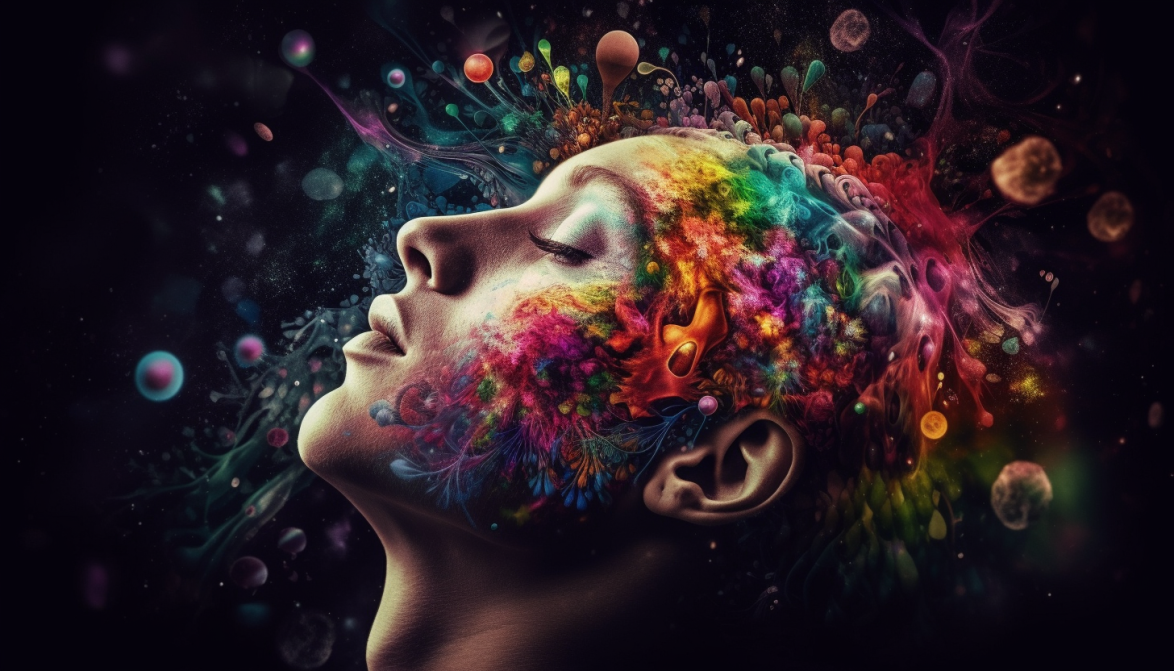
Step into the world of modern psychonautics and you might be intrigued, or puzzled, by a particular trend: microdosing psychedelics. From Silicon Valley’s bustling tech hubs to the peaceful corners of mindful living communities, this nuanced approach to psychedelic use is gaining traction. But our exploration today takes a less-trodden path; we dive deep into the realm of dreams, seeking to uncover the intriguing connections between microdosing and our nightly journeys through subconscious landscapes. As your guide on this journey, I invite you to approach with an open, yet discerning mind, as we explore the evidence, anecdotes, and emerging theories around microdosing psychedelics and its potential impact on dreaming. Could we be on the cusp of understanding another tool in the kit for enhanced dream vividness, recall, and maybe even therapeutic applications? Let’s find out!
The Psychedelic Spectrum: A Primer on Microdosing
Before we embark on this exploration, it is critical to first lay the groundwork and understand what exactly microdosing is. Microdosing, as the term suggests, involves the administration of minute doses of substances—often about a tenth of a recreational dose—in this case, psychedelics. Think LSD, psilocybin, and even research chemicals like 1P-LSD. The objective isn’t to embark on a full-blown psychedelic journey, but rather to tap into a state of enhanced cognitive functioning, creativity, or emotional balance. From the tech engineer seeking an innovative edge to the artist desiring a wellspring of inspiration, or even the individual battling mood disorders, the reasons for microdosing are as diverse as the people partaking in it. While anecdotal reports seem promising, the science around microdosing is still in its infancy, with studies currently underway to decipher its exact mechanisms and potential benefits. The possible influence of microdosing on our dreams remains largely uncharted territory—a mystery that we’ll attempt to unravel.
A Mysterious Meeting: Psychedelics and the Dream Realm
To consider the potential influence of psychedelics on our dreams, it’s important to first recognize that humans have been exploring altered states of consciousness for millennia. Psychedelic substances, often revered as sacred plant medicines by indigenous cultures, have traditionally been used in the context of spiritual and healing rituals, often reported to facilitate vivid visions that share striking similarities with dreams. This parallel is no mere coincidence. From a neurochemical standpoint, both dreaming and psychedelic experiences involve the intricate dance of neurotransmitters, most notably serotonin, which plays a pivotal role in the modulation of our perceptions and emotional states. Early research into the effects of psychedelics on dreaming remains scant, but intriguing. Anecdotal reports and preliminary studies suggest potential enhancements in dream recall and vividness following psychedelic use, hinting at the complex interplay between these potent substances and our dream states.

Vivid Visions: How Microdosing May Amplify Our Dreams
Imagine, if you will, waking up after a night of dreaming and being able to recount every intricate detail, every shade of color, every complex emotion with striking clarity. Such is the reported experience of some individuals who engage in microdosing. According to anecdotal accounts, psychedelics, even in minute doses, seem to have the potential to turn up the dial on dream vividness and recall. But why might this be? One prevailing hypothesis lies in the action of psychedelics on our serotonin receptors, particularly the 5-HT2A receptor, leading to increased neural connectivity and plasticity. This enhanced plasticity could potentially intensify our dream experiences and aid in their retention upon waking. However, it’s essential to recognize the inherent challenges in quantifying the subjective nature of dreams and the need for empirical studies to validate these experiences. The path to understanding how microdosing may shape our dreams is rich with promise and puzzles, each piece providing a glimpse into the infinite complexity of our minds.
Personal Panoramas: The Diversity of Psychedelic Dream Experiences
One of the captivating facets of exploring microdosing psychedelics and dreams is the rich tapestry of individual experiences. Just as dreams are deeply personal and unique to each dreamer, the effects of microdosing can vary considerably among individuals. A multitude of factors, from the specific psychedelic used and its dosage to the psychological makeup of the individual, can shape the unique interplay between microdosing and dreams. Some report heightened dream lucidity and recall, while others notice subtler changes, such as shifts in the thematic content of their dreams. Recognizing this diversity of experiences is crucial, and it underscores the importance of personalized approaches and introspective exploration. Engaging with psychedelics to explore dreams isn’t a one-size-fits-all process; it’s an intimate journey of self-discovery and understanding, demanding respect and mindfulness.
Healing Horizons: Microdosing, Dreams, and Psychotherapy
As we delve deeper into the potential interplay between microdosing and dream enhancement, we open a new frontier of therapeutic possibilities. The realm of dreams has long been recognized as a potential vehicle for psychological insight and healing, as proposed by various psychoanalytic and psychotherapeutic theories. Could microdosing serve as a tool to enhance these therapeutic processes? Anecdotal reports and early research suggest that psychedelics might facilitate access to the subconscious and promote emotional processing, potentially enhancing dreamwork and psychotherapy.

However, these exciting possibilities must be tempered by the call for rigorous scientific investigation. Understanding the therapeutic potential of microdosing for dream enhancement, as well as the risks and limitations, requires comprehensive, well-designed research studies. As we stand at this frontier, the promise of discovery is tinged with the responsibility of thorough, ethically conducted exploration.
Dream Journeys: Navigating the Psychedelic Landscape
As we conclude this exploration, we find ourselves standing on the threshold of a vast and fascinating landscape. Through the lens of microdosing psychedelics, we’ve embarked on a journey into the realms of dreaming, an intimate theater of our subconscious. We’ve woven through the anecdotal reports and burgeoning research that suggest microdosing may amplify dream vividness and recall, hinting at a tantalizing intersection between the world of psychedelics and the nebulous realm of dreams.
In our exploration, we’ve acknowledged the individuality of these experiences and the multitude of factors that shape this intimate dance between psychedelics and dreams. We’ve contemplated the potential therapeutic implications of these enhanced dream experiences, a promising horizon that beckons for further exploration. Yet, we recognize that the psychedelic terrain is both promising and challenging, filled with uncharted territories that demand rigorous scientific scrutiny and a thoughtful, ethical approach.
As we stand at the threshold of this psychedelic landscape, the call for further research echoes resoundingly. While microdosing psychedelics may hold potential for enhancing our dream experiences and psychological well-being, we must journey forth with curiosity, mindfulness, and respect. As we venture deeper into understanding this intimate intersection of microdosing and dreaming, we have the opportunity to illuminate the complexities of our consciousness and perhaps, gain profound insights into our waking and dreaming selves.
-
Small Doses, Big Changes: The Comprehensive Analysis of Microdosing Psychedelics for Mood and Well-being
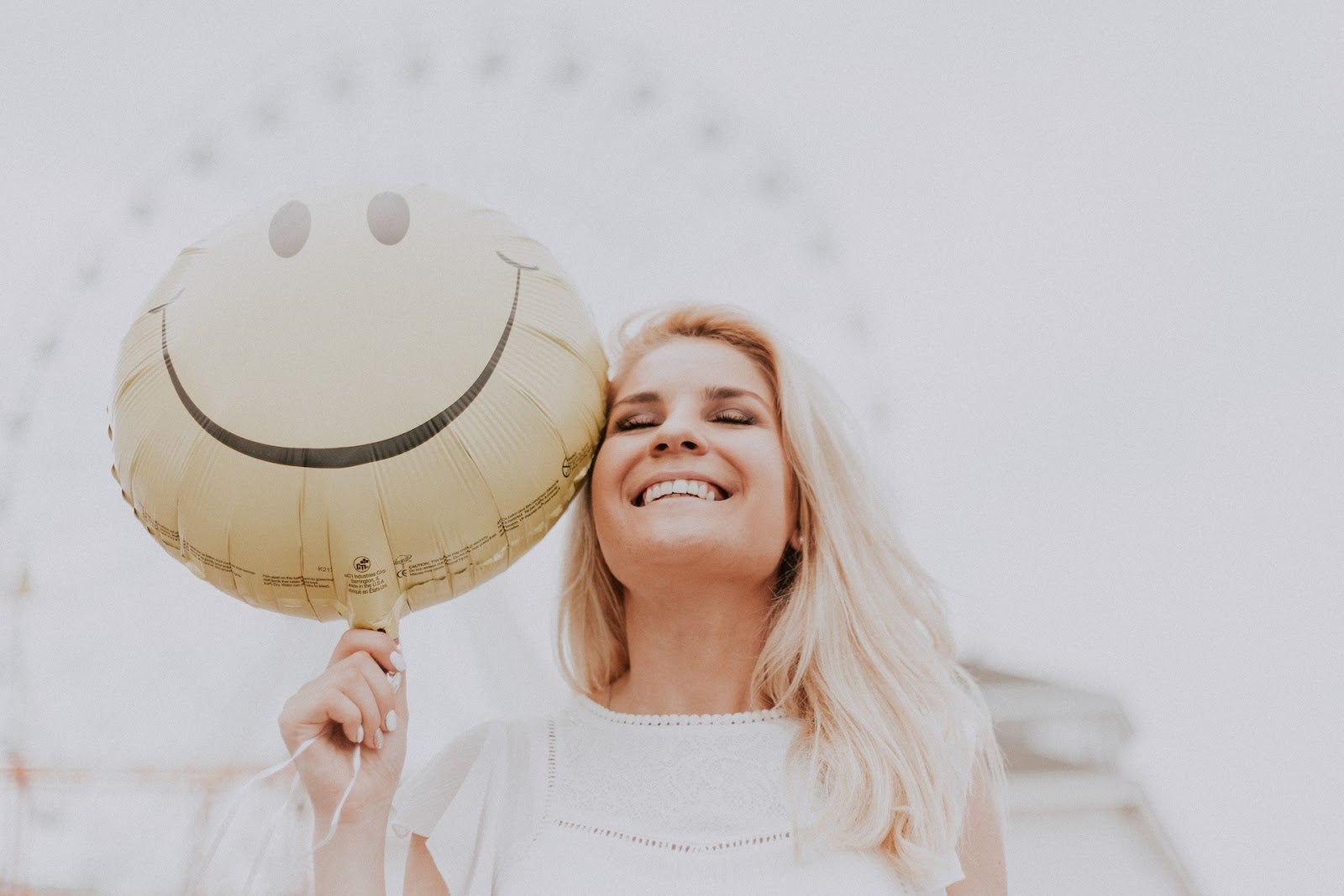
As the ebb and flow of modern life becomes increasingly complex and demanding, we find ourselves on the cusp of an intriguing revolution – the use of microdosing psychedelics for the enhancement of mood and overall well-being. This blossoming interest is underpinned by a desire to explore the boundaries of consciousness, cognitive performance, and emotional health. This article’s quest is to elucidate the enigmatic world of microdosing, highlighting its potential to exert a substantial influence on mood, emotional well-being, and quality of life. Our exploration rests on the belief that psychedelics, when used thoughtfully and judiciously in a microdosing regimen, might hold significant promise in optimizing our mental states and enhancing our experience of life.
Deciphering Microdosing: A Journey Beyond the Psychedelic Horizon
Microdosing is a term used to describe the practice of consuming sub-perceptual doses of psychedelic substances – doses so small they don’t induce a full-blown psychedelic experience but might subtly shift cognition, mood, and perception. Common substances for microdosing include lysergic acid diethylamide (LSD), psilocybin (magic mushrooms), and, in some cases, dimethyltryptamine (DMT). The protocols for microdosing vary, but a typical regimen may involve consuming a microdose every third day for several weeks or months. Scientific research on the effects of microdosing on mood and well-being is still in its infancy, largely due to legal restrictions and a lack of funding. Yet, anecdotal reports and preliminary studies suggest potential mood-enhancing and anxiety-reducing effects. The aim of this section is to peel back the layers of mystique surrounding microdosing, shedding light on its usage, practices, and its potential to facilitate a deeper understanding of our emotional landscape.
Dancing with Serotonin: Psychedelics and the Intricate Choreography of Mood
Journeying deeper into the world of microdosing, we uncover a complex interplay of neurological processes that hint at how microdosing might influence mood. It’s widely believed that psychedelics like LSD and psilocybin exert their primary effects through the serotonergic system – the very system that plays a crucial role in regulating mood, cognition, and behavior. During a microdosing regimen, it’s proposed that these substances, even in small quantities, could stimulate the brain’s serotonin receptors, potentially leading to elevated mood and a heightened state of awareness. In tandem with this, emerging research suggests psychedelics might also promote neuroplasticity, the brain’s capacity to form and reorganize synaptic connections. This property might lend a helping hand to improved emotional regulation, enhanced empathy, and augmented psychological flexibility, all critical elements of a healthier, happier mind. Yet, the kaleidoscopic world of the human brain presents considerable challenges in pinning down these mechanisms conclusively, a task that the scientific community is passionately undertaking.

Microdoses, Macro Benefits? Unveiling the Potential Upsides for Mood and Emotional Well-being
Turning our gaze to the potential benefits of microdosing psychedelics, a vibrant tapestry of anecdotal reports and emerging research paints a promising picture. While the body of empirical research remains small, initial studies and numerous subjective reports suggest that microdosing might have a positive influence on mood and emotional well-being. Users frequently describe experiences of increased positive mood, a deeper sense of well-being, and a more mindful presence. Intriguingly, there also appears to be potential for microdosing to alleviate symptoms of conditions characterized by mood dysregulation, such as depression and anxiety. Some individuals report experiencing a gentle lift in their mood, a quieter mind, and an increased ability to engage with life more fully and fearlessly. However, in the pursuit of a balanced understanding, it’s essential to acknowledge the need for more comprehensive, rigorous scientific studies to verify these potential benefits and uncover any possible risks or downsides. As our journey continues, we are beginning to scratch the surface of a potential new frontier in mood enhancement and emotional well-being.
Beyond the Micro: The Long Reach of Microdosing on Quality of Life
In the vast panorama of microdosing’s potential impacts, its influence on long-term well-being and quality of life sparkles with particular intrigue. Users often report subtle yet significant shifts in their everyday experiences. It’s as if a veil lifts, allowing for a brighter, richer, and more nuanced experience of life. Increased focus, a more fluid interaction with creative tasks, and a sense of personal growth are frequently mentioned among the bouquet of potential benefits. The long-term effects of this practice could, as some suggest, transcend the simple relief of symptomatic discomfort to usher in a more profound sense of contentment, fulfillment, and engagement with life. Yet, in all our excitement, we must tread carefully, acknowledging that comprehensive, longitudinal studies to understand the sustained effects of microdosing on quality of life are currently sparse. As we step forward, there’s a vital need for rigorous scientific exploration to illuminate this promising but largely uncharted territory.
Psychedelic Self-Portraits: The Art of Personal Experience and Individual Variability in Microdosing

In the labyrinth of psychedelic microdosing, every individual’s experience is a unique journey shaped by myriad factors. A multitude of personal variables, such as physiological makeup, psychological disposition, intention, and environment, all intertwine to create a highly individualistic experience. These self-reported journeys range from subtle enhancements of daily activities to profound life-altering experiences. Anecdotes often underscore the importance of self-reflection, responsible practices, and integration as pivotal components to maximize the benefits of microdosing. Yet, they also highlight the need for personalized approaches and self-care measures, as not all journeys are smooth sailing. It’s vital to remember that while microdosing can open new windows of self-awareness and well-being, it is not a magical panacea and should be approached with respect, curiosity, and care. As we delve deeper into this practice, the emphasis is increasingly on understanding each unique journey, while collectively refining our map of this fascinating terrain.
Microdosing Psychedelics: The Final Thought in Our Kaleidoscopic Journey
As we near the end of our exploratory journey into microdosing psychedelics and its influence on mood and well-being, it’s clear that this practice presents an intriguing kaleidoscope of potentials. It’s a realm where the realms of neurobiology, psychology, and subjective experience converge, forming a vivid tapestry of promise and complexity. The therapeutic potential of microdosing — its capacity to positively influence mood, emotional well-being, and even our overall quality of life — shines brightly, casting an illuminating glow over our current understanding of brain, mind, and consciousness.
However, as we step back to admire the view, it’s crucial to remember that our understanding is still embryonic. We are explorers at the frontier of a vast and complex terrain. The call for further research echoes loudly, urging us to pursue a more comprehensive, nuanced understanding. It is our responsibility to approach this practice with both a sense of curiosity and respect, balancing enthusiasm with caution. Individual self-awareness, integration, and responsible exploration must guide our way forward. As we stand at the precipice of new knowledge and potential transformation, the prospect of what we may discover about ourselves and our capacity for well-being is indeed exciting.
-
Unlocking Microdosing’s Influence on Motivation and Goals

As we sail upon the great sea of curiosity, we find ourselves increasingly drawn toward the seemingly mystical realm of microdosing psychedelics. As if composing a symphony from the whispers of uncharted territories, we aim to explore the potential influence of these substances on motivation, goal setting, and accomplishment. Within the stanzas of this piece, we seek to scrutinize the interactions of psychedelics and motivation, revealing a dance that could potentially sway towards increased productivity, sharpened focus, and the realization of our loftiest aspirations.
Psychedelic Miniatures: The Art and Science of Microdosing
So, what is this creative tool that holds such transformative potential? Microdosing, at its core, is a practice of consuming sub-perceptual amounts of psychedelics, a strategy that seeks the subtle resonance of these substances rather than their typical, more pronounced effects. LSD and psilocybin mushrooms are the usual conductors of this symphony, owing to their well-studied impact on consciousness and cognition. The score for this practice is usually marked by consuming approximately one-tenth to one-twentieth of a recreational dose, typically every three days. While a budding body of research offers hints towards its potential benefits for motivation and productivity, the scientific understanding of microdosing is still in the prelude stage, waiting to reach the crescendo of concrete evidences and rigorous studies. Let’s tune our instruments, dear reader, and delve deeper into this intriguing phenomenon.
Psychedelics and Motivation: An Unexpected Duet
Now, let us delve into the intriguing interaction between psychedelics and our motivational prowess. The melody behind this relationship may be attributed to a couple of key mechanisms, such as a surge in dopamine release and neuroplasticity stimulated by these substances. Picture dopamine as the conductor of our motivational orchestra, initiating a lively tempo that drives us to explore, learn, and achieve. Meanwhile, neuroplasticity acts as our mind’s composer, shaping and rewriting our neural patterns and cognitive processes. Psychedelics, notably when microdosed, are theorized to enhance cognitive functioning, creativity, and even usher us into the coveted flow state—a harmonious concerto of focus, productivity, and satisfaction. Yet, as with any composition still in progress, there are obstacles to overcome. The major challenges lie in studying and understanding the precise mechanisms and variables that influence this interaction between microdosing and motivation. Yet, this only adds to the profound intrigue of our exploration.

The Symphony of Success: Microdosing and Goal Setting
As we progress in our melodic journey, we find ourselves in a crescendo of curiosity—how might microdosing influence our ability to set and pursue our goals? Anecdotal accounts and preliminary research suggest an intriguing possibility—that microdosing might act as a catalyst, amplifying our ability to establish, prioritize, and stride towards our objectives. Picture your mind as an orchestra. Microdosing, in this metaphor, could serve as a maestro, providing clarity and direction to each section of the ensemble—enhancing self-reflection, enabling efficient task allocation, and guiding us towards a harmonious performance. Furthermore, our exploration suggests that microdosing could potentially benefit those who aim to amplify their motivation and achieve their goals, from artists seeking inspiration to entrepreneurs setting ambitious targets. Nonetheless, the symphony of success is multi-faceted, and our understanding of how microdosing fits into this orchestra is still forming its composition
In Tune with Productivity: The Symphony of Microdosing and Achievement
As our exploratory melody continues, we turn our attention to how microdosing might impact productivity, efficiency, and overall work performance. The notes of anecdotal reports play a tantalizing tune, suggesting that microdosing may conduct a performance of increased productivity. Just as an accomplished conductor can guide an orchestra to a flawless performance, microdosing may potentially provide the guidance to enhance time management, creative problem-solving, and efficient task completion. However, this beautiful composition of productivity must be performed responsibly. The process of microdosing requires careful attention and intention to ensure its benefits are harnessed to the fullest, just as a well-rehearsed symphony ensures a harmonious performance. In this light, we also need to explore further how we can maximize the benefits of microdosing for motivation and goal achievement.
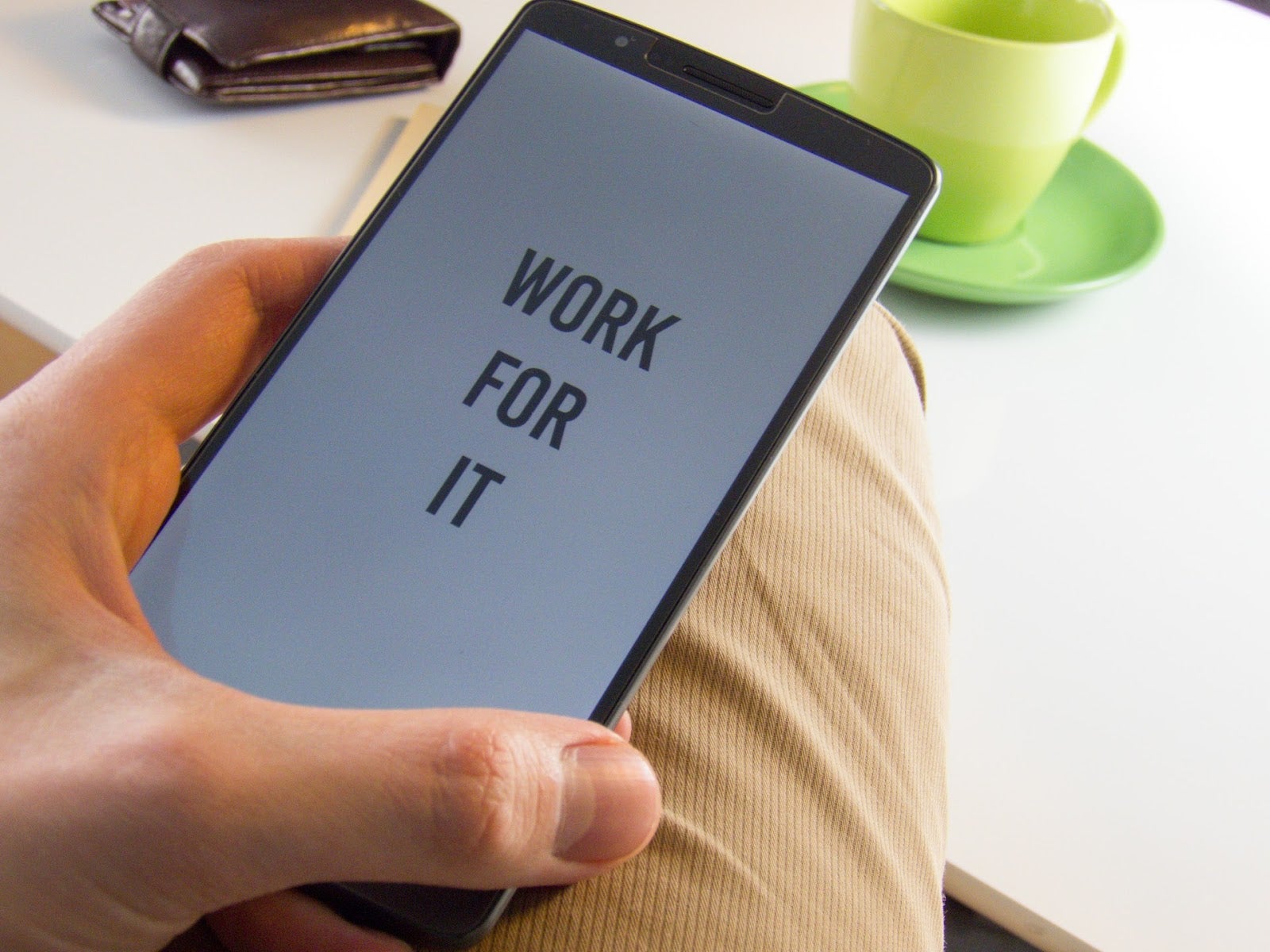
Conducting Your Personal Symphony: Individual Experiences and Variability
Lastly, let us appreciate the uniqueness of every symphony. Like each orchestral performance that is unique in its interpretation, so are the individual experiences of microdosing and its influence on motivation and goal setting. One’s mindset, the setting in which the microdosing occurs, and one’s intentions—these are our individual instruments, each playing a distinct role in the overall melody. Some may experience heightened motivation and focus, while others may find a space for introspection and strategic goal-setting. This underscores the importance of personalized approaches and self-reflection when engaging in microdosing practices—no two orchestras play the same symphony in exactly the same way, and thus the experience and effects of microdosing may also differ between individuals. The quest for understanding the varied effects of microdosing serves as our ongoing improvisation, a continually evolving melody in the grand symphony of psychedelic exploration.
Harmonizing Potential: Microdosing and the Rhythm of Motivation
As our journey through the realm of microdosing psychedelics comes to a close, we reflect on the comprehensive analysis of its influence on mood and well-being. The intricate dance between microdosing and motivation reveals a fascinating interplay, where the subtle notes of psychedelics contribute to an amplified symphony of motivation, goal setting, and achievement. Through this exploration, we have witnessed the potential of microdosing to enhance positive mood, emotional well-being, and overall quality of life. However, it is essential to approach microdosing with responsible practices, self-reflection, and integration, embracing the importance of set and setting in optimizing its effects. The future holds promising possibilities, as further research and self-awareness will allow us to fully grasp the potential benefits of microdosing for motivation and goal achievement, enriching the lives of those seeking to unlock their fullest potential.
-
Microdosing Kits in Toronto
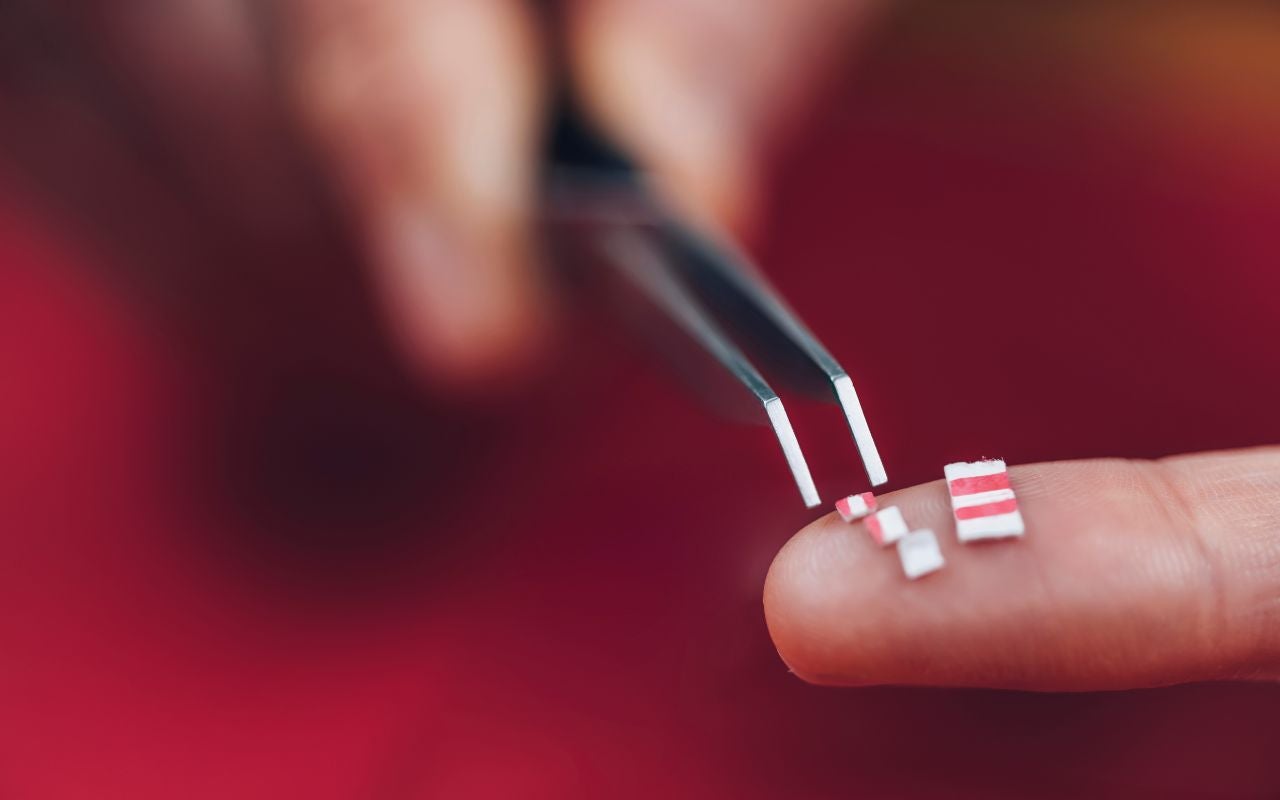
Whether you’re looking to relax, unwind, or find that extra creative you’ve been looking for, microdosing can be very effective. What is microdosing, and what are microdosing kits? Is microdosing safe? How can I use microdosing to improve relational skills or heighten spiritual awareness?
As microdosing becomes more popular and more accepted, many people are reaching out to find ways that they can safely engage with psychedelic substances. It’s super important to separate fact from fiction and to lower the temperature on the misinformation that has long held microdosing captive. If you’re looking for microdosing kits in Toronto, now’s the best time to start.
What Is Microdosing?
Microdosing is the concept of consuming unnoticeable amounts of psychedelic substances such as psilocybin mushrooms or LCD. Folks who have integrated microdosing into their daily routine have reported improved concentration, better creativity, energy, superior relational skills, and more. Enthusiasts claim that microdosing can even create moments of heightened spiritual awareness and sensory enhancement. Psychedelic researchers have found that the positive effects of microdosing include positive upswings for mood disorders such as anxiety and depression.
There are life-changing benefits to microdosing, as magic mushrooms can do wonders for positive self-development. By microdosing common species of psilocybin mushrooms, users can find health benefits that might be eluded by the effects of pharmaceutical drugs.
Microdosing means taking very small amounts—sub-perceptual, as in so small that the average user won’t notice the major effects at all. Individuals who integrate sub-perceptual doses weekly might notice remarkable results.
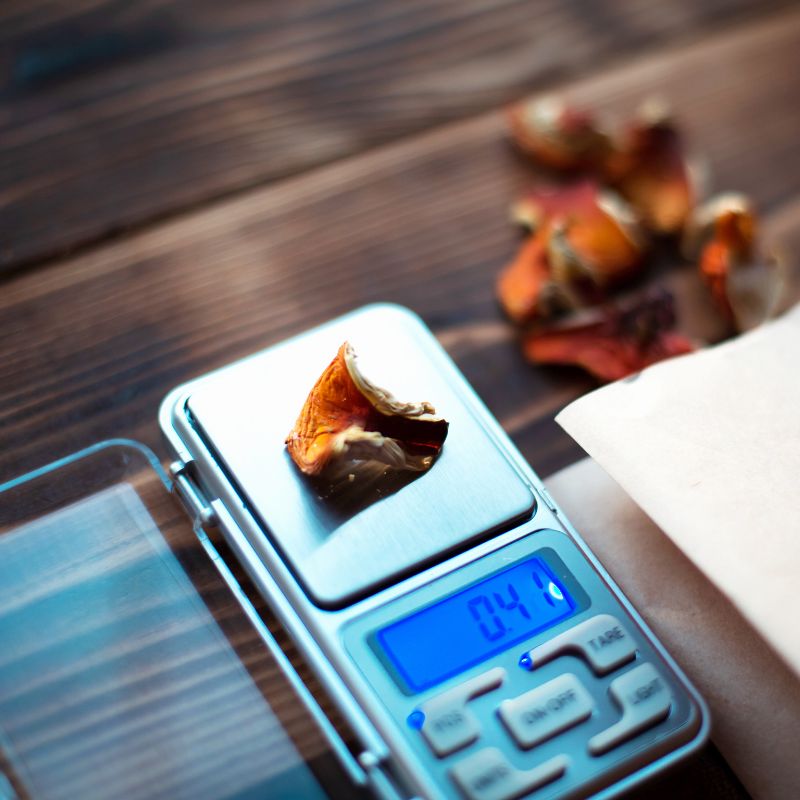 The Importance Of Microdosing Kits
The Importance Of Microdosing KitsMicrodosing has existed for a long time, but its recent popularity can be directly linked to the needs of the general populace. Some researchers believe that the “stoned ape theory” is paramount to our usage and growth alongside the effects of psychedelic substances—this is the idea that the evolution of the human brain is because of the consumption of psilocybin mushrooms. Ancient cultures such as the Aztecs used microdosing for various purposes, and so its resurgent popularity is a long time coming.
The effects of microdosing have been seen as safe, therapeutic, and sacred. The subculture of psychedelic use doesn’t have to remain as such; by using microdosing kits, anyone can take part in these therapeutic effects. Hundreds of thousands of people microdose worldwide, and it is becoming more and more accessible by the year. If you’ve thought about microdosing it might be time to join the thousands of people from all walks of life that rely on the effects for boosts to mental health, well-being, and creativity.
The Benefits Of Microdosing
There are many benefits of microdosing including:
- Improved creativity
- More energy
- Better state of mind
- Boosted productivity
- Enhanced focus
- Improved relationships
- Higher levels of empathy
- Heightened athletic coordination
- Better leadership development
By using Neurodose, you can increase the frequency and intensity of many states that can remain elusive. Microdosing does more than increase creativity and energy, it can create new flow states in a person that ultimately improves their productivity and focus. By microdosing, you can find the confidence to improve your relationships, increase your empathy, and assist in the development of important aspects of your life that can even boost your career.
While many people microdose for personal development, studies have shown that microdosing can help improve every aspect of a person’s life. The creative benefits are linked to new and exciting forms of consciousness, which is especially appealing to anyone that suffers from chronic anxiety, depression, or nausea. Many people have used microdosing kits to help them create new concepts, solve problems at work, or reduce procrastination. Beyond the social and athletic performance boosts, there is also a pleasant spiritual awareness that can help anyone connect with aspects of their life that have been lacking.
Microdosing Kits Decrease The Frequency Of Undesirable States
There are a number of disorders and undesirable states that plague modern life. Microdosing kits can help prevent and soothe many of them, including:
- Depression
- Anxiety
- ADD/ADHD
- Mood disorders
- PTSD
- Addiction
By reducing these undesirable states, microdosing kits can improve the pleasurable feelings in a person’s life. Microdosing kits can reduce the intensity of generalized and social anxiety, the effects of ADHD, mood disorders, PTSD, and more. These kits can help create many positive changes for anyone suffering from these “mental illnesses,” and instead of pathologizing a person’s natural progression toward an actualized self, Neurodose promotes these kits that become part of an individual’s specific journey toward wellness.
Many different clinical studies have shown that small amounts of psychedelics help treat depression, anxiety, and more. Additional anecdotal evidence has shown that a regular regimen of sub-perceptual microdosing can have great healing benefits for anyone suffering from a variety of common health conditions.
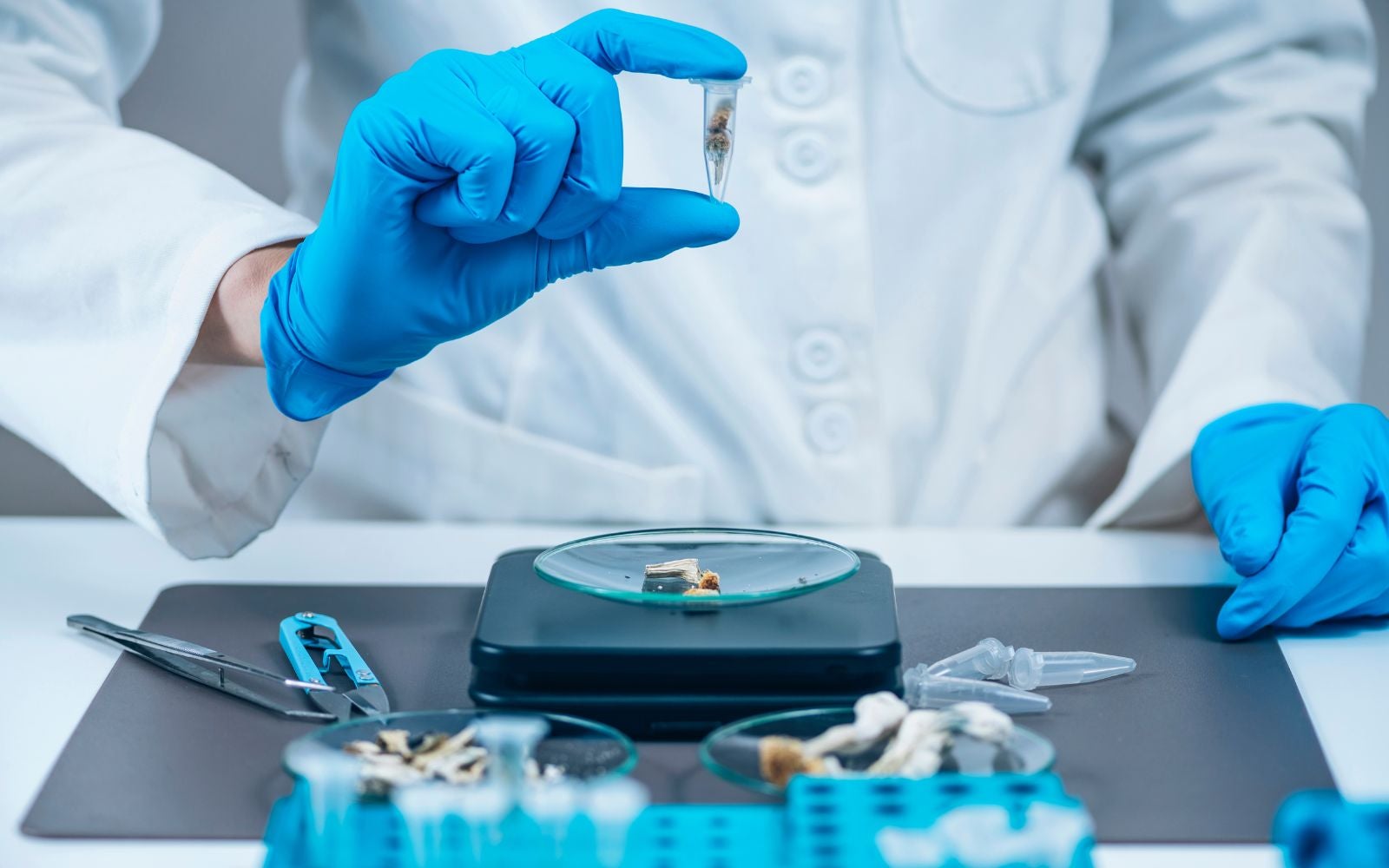 Types Of Microdosing Kits
Types Of Microdosing Kits4-ACO-DMT
4-ACO-DMT is a “classic” psychedelic that produces similar effects to magic mushrooms or psilocybin. 4-ACO-DMT and psilocybin convert into Psilocin in your body after you ingest them, though the effects of 4-ACO-DMT last longer than traditional psilocybin—up to 7 hours instead of the 4-6.
4-ACO-DMT provides a euphoric, warm, colorful, and gentle feeling described as less jarring or nauseous than other psychedelics. With the 4-ACO-DMT kit you will find a convenient capsule microdose, beneficial effects that last up to 7 hours, and a supportive team alongside a free consultation.
1P-LSD
1P-LSD has properties similar to traditional LSD, with anyone used to LSD finding their effects almost identical. Both LSD and 1P-LSD produce similar effects in their microdoses, helping anyone boost mood, focus, and energy throughout their day. It is recommended that you take one microdose of 1P-LSD every three days—one microdose on Day 1, then another on Day 4.
Give Microdosing Kits A Try
No matter if you decide to try 4-ACO-DMT or 1P-LSD, there are many benefits to both that have helped thousands of people. If you’re curious about microdosing in Toronto, contact Neurodose today for a free consultation; we’d love to tell you more about the incredible effects and positive aspects of microdosing. All of our microdosing kits include everything you need to begin your microdosing journey, including important instructions on how to prepare your kit.
